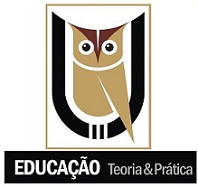Movement of debates and educational practices in the journals “Correio de Minas”
DOI:
https://doi.org/10.18675/1981-8106.vol24.n47.p23-41Keywords:
Educational debates. Educational practices. Correio de Minas. Juiz de Fora.Abstract
The newspapers produced in Brazil in the 19th and 20th centuries, as demonstrated by Inácio, Santos e Jinzenji (2010), were first the enlightenment project of spreading the values and ideas in order to educate the readership within a project of civilization. So-called "light diffusers, the journals can be analyzed as an arena of debate, composed of a diversity of fields and topics. The aim of this study is to reflect on the discussions and educational practices published in the newspaper "Correio de Minas", regarded as an "important political game Illustrator mining vehicle" and promoter of "educational deficiencies" at the beginning of the Republic. The choice by "Correio de Minas" was due to its significant movement reported in the almanacs of Minas Gerais, as well as by its location in the city of Juiz de Fora, according to Araújo(1916), highlighted as "one of the most modern and the most important of Mines" at that time. The dissemination of educational debates by the journal was significant for the analysis of different educational projects for Minas Gerais. It was possible to observe discourses, strategies, "real games". The newspaper was an instrument of power and persuasion of what if he wanted to play.Downloads
Additional Files
Published
How to Cite
Issue
Section
License
Authors who publish in this journal agree to the following terms:
a) Authors assign copyright to the journal, with the work simultaneously licensed under the Creative Commons Attribution License that allows sharing of the work with acknowledgment of authorship and publication in this journal.
b) The policy adopted by the Editorial Committee is to assign copyright only after a period of 30 months from the date of publication of the article. After this time, authors interested in publishing the same text in another work must send a letter to the Editorial Committee requesting the release of the assignment of copyright and wait for a response.
c) This journal provides public access to all its content, since this allows greater visibility and reach of published articles and reviews. For more information on this approach, visit the Public Knowledge Project, a project that developed this system to improve the academic and public quality of research, by distributing OJS as well as other software to support the public access publication system to academic sources. The names and email addresses on this website will be used exclusively for the purposes of the journal and will not be available for other purposes. This journal provides open any other party  This work is licensed under a Creative Commons License
This work is licensed under a Creative Commons License











